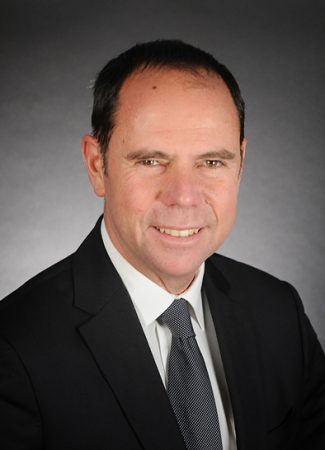Since the carbon market was created more than fourteen years ago, the price per tonne of carbon has never been higher. On March 31st, the closing value of the EUA Dec21 contract was 42.55€/Tn. Market prices have been rising steadily for quite some time now, i.e., +37% since 2020 and +18% since the beginning of 2021. A market currently under pressure and very uncertain as to the decisions that will be taken during its fourth Phase which begins in 2021. Decisions that must enable the European Union to reach its greenhouse gas emission reduction targets by 2030 – the European Commission insists on this issue – and the stakes are increasingly urgent to reach the carbon neutrality objective in 2050.
As time runs out to achieve a reduction in greenhouse gases, the targets keep changing. The European Commission has been forecasting a 40% reduction (from 1990 levels) and is now talking about a 55% reduction by 2030. With the carbon market subject to constant changes and carbon prices rising rapidly, how can industries plan their investments for the long term?
Let’s have a look back at the past to better understand our present and the challenges of this fourth Phase we have just entered.
As part of an ambitious climate policy, the European Union is committed to reducing greenhouse gas emissions, initially by 2030. In the framework of the Kyoto Protocol, the European Union, which is also present in the Paris Agreement, has also committed to achieving the objective of carbon neutrality by 2050, i.e., a balance between carbon emissions and the absorption of carbon from the atmosphere by means of Carbon Capture Storage. This is a major challenge contemplated in “the Green Deal”.
It all began in 2000, when the European Commission launched a plan, adopted in 2003 and implemented in 2005, to create a market for the exchange of CO2 quotas (European Union Emissions Trading System – EU ETS) in order to encourage member countries to meet their national CO2 reduction targets. Since 2005, the EU ETS has capped the CO2 emissions of those companies that emit the vast majority of greenhouse gases. This carbon market is divided into four Phases. A better understanding of each of these Phases allows us to better decipher current events and the tension the market is currently subject to.
Let’s recall the basic principles of this system: a CO2 emissions cap is determined for each Phase, known to all players. An allowance is equivalent to 1 tonne of CO2 emitted by a company. With this system, companies incorporate into their production price the the allowances relating to the tonnes of carbon emitted. Those with a surplus of allowances — because they have emitted less CO2 than expected – can sell them on the market; conversely, companies with a shortage of allowances can buy them. At the end of a Phase, a company must have the necessary allowances equivalent to the amount of CO2 emitted. Otherwise, it will be fined.
Let’s take a quick look at the key elements of the various Phases of the EU Emissions Trading Scheme (EU ETS).
1st phase: 2005-2007
This Phase served as a “pilot” for the following Phases. The companies concerned by this system were only power sector industries and large energy-intensive industries (refineries, steel, iron, cement and lime, glass, ceramics, paper pulp). The allowances allocated to the latter were virtually free of charge and free trade of these emission rights was possible. The cap on allowances allocated to these industries was based on emission estimates. The power sector industries experienced a golden age: by incorporating the price of CO2 into the sale price of electricity, but with no real cost when buying allowances, they made record profits. As a result, at the end of this Phase, there were more allowances than emissions, leading the EU ETS market to converge towards a price per tonne of carbon of zero in 2007. The mechanism no longer seemed relevant to achieving the targets it was created for and had to be amended.
2nd phase: 2008-2012
In order to avoid a surplus of allowances, the emissions cap was reduced. This time, the cap was based on the actual emissions of the companies set in the first Phase. New countries also joined the EU ETS. The total amount of free allowances was reduced. Auctions of allowances were introduced in this second Phase. Despite the efforts made, this Phase was affected by the economic crisis of 2008: a slowdown in the European economy, which led to a surplus of allowances in circulation and affected the carbon price, which was trading at around €5/Tn.
3rd Phase: 2013-2020
This third Phase was more demanding in terms of the objectives to be achieved. For the first time, the EU ETS introduced a single cap on allowances for all European countries, thus no longer allocating them at a national level as initially done. The number of sectors covered by the EU ETS was expanded (ferrous and non-ferrous metals, primary and refined aluminium, nitric acid, adipic acid, glyoxylic acid, ammonia, soda ash, hydrogen, petrochemicals). Auctioning was now the primary source of trading. The beginning of the third Phase saw a surplus of allowances, and in 2015 a freeze on allowances was put in place in order to limit the quantities in circulation in an attempt to push the price of carbon up. Despite this measure, the volume of allowances remained high and the price of CO2 low, which would prevent the emissions reduction targets from being met. To address this surplus of allowances and to provide a more sustained price signal, the Market Stability Reserve (MSR) was created in January 2019. The MSR automatically regulates the quantity of allowances in circulation, placing them into a kind of reserve in the event of a surplus or releasing them in the event of a deficit during a specific period. This practice has helped to rebalance supply and demand and thus price volatility, as CO2 prices are rising again since fewer allowances were in circulation.
4th phase: 2021-2030
We have just entered this Phase and many issues are already on the table. In order to reach the targets by 2030, the measures to be taken seem to be decisive. A cross-border carbon adjustment mechanism should be put in place, supported by the European Parliament. Indeed, in view of the rise in CO2 prices in this last Phase, and to avoid “carbon leakage” of small European companies (i.e., their relocation outside the EU), it is essential to introduce a tax on imports from countries outside the European Union that have less demanding targets than the EU. These imports would account for more than 20% of the EU’s carbon footprint. But what should be done with the free allowances? Some believe that they should be cancelled out, as the EU could be singled out for protectionism to protect its companies from foreign competition. The European Commission is meeting in June 2021 to define the issues surrounding this last and still uncertain Phase.
Clearly, the carbon market is a system which, despite its difficult beginnings, could help to achieve the objectives of reducing greenhouse gases, but at the expense of a price volatility which heavily impacts the competitiveness of companies within the European Union. Moreover, the entry of new players exposed to foreign competition in the carbon market may generate distortions or even crises. On the other hand, due to its nature of high liquidity and structurally increasing prices, this market could be the target of hedge funds. In the end, it is a mechanism that depends largely on political decisions, where the players do not necessarily always have the same interests. It remains to be seen whether the measures that will be taken for the ETS in the framework of the Green Deal in June 2021 by the European Commission will be able to deal with these issues and offset the distortions of this market.
Ana Haya Sauvage







